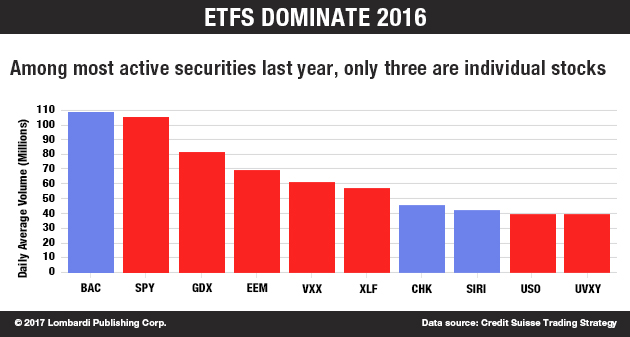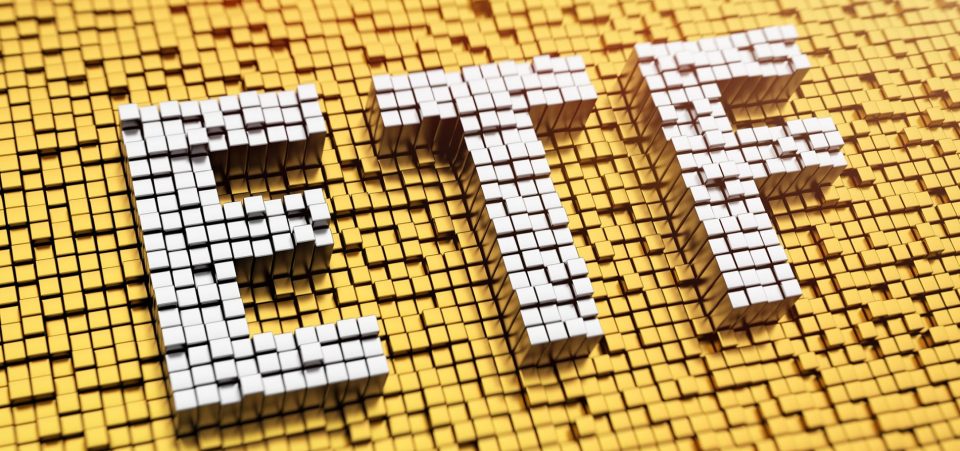What Are Commodity ETFs?
Exchange-Traded Commodities are similar to other Exchange-Traded Funds (ETFs). Except, instead of stock indices, commodity ETFs track the performance of commodity or currency markets, using a physical/spot approach or using futures. But first, it’s useful to review what ETFs are and why they offer any investor more flexibility than individual stocks or mutual funds.
An exchange-traded fund refers to a special type of investment fund that has two general features. It trades on a stock exchange like the NYSE, for example, as a stock. An ETF’s performance is based on the index on which it is based. Overall, it might be said that ETFs combine the characteristics of a fund and stocks, allowing investors to enjoy the benefits that both instruments offer.
ETFs are generally an excellent way to manage risk. In practice, an ETF allows you to take up a position on a stock index—sectoral or global, as you prefer—or even the bond market in a single transaction. That’s because investing in the ETF market is as convenient as in the stock market.
Small and large investors alike can benefit from ETFs. That’s because ETFs are divided in shares, thus they can be bought like shares. The minimum trade is equal to one share. As for costs, there are no surprises. The transaction costs tend to be on par with those of shares. There may be some differences in annual commissions, but that is a topic for another article.
ETFs can appeal for a variety of reasons and risk tolerances. In my case, I like the fact that ETFs allow investors to invest virtually anywhere and in any kind of business. ETFs offer exposure to a wide range of markets and asset classes, replicating the performance of your favorite financial index. In other words, they allow investors to spread their risk much better than investing in individual shares.
ETFs offer the advantages and ease of trading of stocks, and the risk distribution of mutual funds. It might be the investment instrument of choice for those who don’t want to worry about the stock market’s performance, sneaking a peak at work every five minutes. Skilled traders might consider commodity ETF options.
Investors can hedge their actual ETF holdings through options. Some exchanges offer options based on a variety of indices including commodity-based equities with different levels of risk and volatility.
ETFs also offer investors a chance to get into highly specialized market segments (smaller-cap stocks in biotech, for instance) while still maintaining some risk control. For example, instead of going all-in on an emerging biotech firm with a blockbuster drug potential, you could instead invest in a biotech or pharma ETF that features it along with more established firms working on similar products. No wonder ETFs are so popular.

Therefore, ETFs might be compared to bricks, which give any investor, even those who can’t afford to make big plays, a chance to build their portfolio. They are more flexible than mutual funds and have fewer risks than stocks. But what if you wanted to invest in commodities? ETFs can accommodate that too, through instruments simply known as commodity ETFs.
How Do Commodity ETFs Work?
There are two ways to consider investing in commodity ETFs. As commodity prices have reached historically low levels, investors can choose to avoid them altogether. But the less risk averse might see the benefits of commodities. Commodities are raw materials that are needed to fuel industry. Thus, when the world economy picks up steam (and not just in some areas) their value shall increase.
Thus, commodities can represent exceptional opportunities for some investors. This is the case for those who, like vultures (no offense intended) adopt the “blood to be spilled in the streets” strategy. They buy a given asset class when it has fallen sharply. For example, oil at $46.00/barrel might be one such commodity. But, natural gas, copper, platinum, rare earth metals, potash, and phosphate would qualify. All of these have seen their best moments a few years ago.
How to Trade Commodity ETFs
Generally, the easiest way to add some commodity exposure to your portfolio was to physically buy the raw material involved. However, physical investment involves storage problems, is unworkable, or is overly expensive, making this route—unless you own some very large walk-in closets and an oil tanker as a personal watercraft—rather unhelpful. Yes, some raw materials such as precious metals like gold, silver, platinum, or even palladium can be stored in bank vaults.
Most people, given that physical investment is not feasible, can reproduce the experience by getting some exposure to commodity ETFs. But, commodity-focused ETFs represent a small percentage of ETF stocks and are therefore a very minor class compared to equities and bonds.
How Are Commodity ETFs Taxed?
Investors are often concerned about the impact of taxation on their portfolios. Investors can choose to choose lower after-tax returns to reduce their tax liability. This is an important consideration when investing in ETFs that are often recommended for their tax effectiveness.
The commodity ETF tax treatment varies. The first thing to know is that commodity ETFs are taxed differently than “regular” ETFs. ETFs in general present advantages from the fiscal point of view. But the fiscal approach varies according to the type of asset and structure of the ETF. (Source: “How Are Commodity ETFs Taxed?,” ETF.com, accessed May 9, 2017.)
This is because funds are arranged according to their exposure. For example, the IRS might treat gold-backed commodity ETFs, where the underlying assets are precious metals, as “collectibles.” (Source: “Taxation of Commodity ETFS & ETNS,” Zacks Investment Research, last accessed May 9, 2017.)
Yet, if the ETF is based on iron ore or other more “industrial” metals, investors might only have to pay capital gains.
Commodity ETFs with Dividends
Dividends provide regular income, which can help address or enhance an investor’s financial needs. This is why institutional investors such as insurers, pension funds, and sovereign wealth funds (funds created by states to prepare for the future, such as Kuwait, the U.A.E., or Norway etc.) rely on them in the first place.
The appeal of many equities often lies more in their dividend than their ability to gain (or fall) from quarter to quarter. So it is with ETFs. Some commodity ETFs offer dividends. One way to ensure dividends might be to invest in commodity stock-based ETFs. In that sense, oil companies often deliver healthy yields. But generally, raw materials do not provide dividends.
Why Commodity ETFs Are Bad
Raw materials in general, not just for ETFs, are complex and most investors, especially individuals, have good reason to avoid betting their retirement savings on them. Such products are somewhat like derivatives, which operate in a whole other class of risk. With few exceptions, even the issuers of commodity ETFs do not physically own the commodities for the practical reasons mentioned above.
Rather, they offer exposure to a commodity’s spot price via futures or futures contracts, which are derivatives. As such, commodity ETFs don’t offer two of the characteristics that draw so many to invest in ETFs in the first place. They have significant volatility and they offer little predictability.
Apart from the vagaries of commodities—they are, after all, raw materials, such that their prices depend for the most part on natural unknowns (crops, climate….)—they are also subject to all too human factors, OPEC production quotas in the case of oil, the success or failure of a mining project, new technologies, or regulatory delays.
Essentially, commodities’ performance can be considered almost completely random. The only reliable information is past and current day performance. In the case of commodities, more than others perhaps, the idea of buying when prices are at their lowest makes most sense, historically. So, while “normal” ETFs are an excellent way to hedge risk and retain convenience, commodity ETFs are a “convenient” way to get into a whole lot of risk.
Still, there are times when raw materials are attractive. For those periods, there is a way to work around the problem. You can bet on the raw material while retaining the benefits of ETF by choosing ETFs indexed on the industries that rely on that raw material. If you like gold, you can choose ETFs based on listed gold mining companies instead of directly buying gold, or potash mining companies instead of actual potash, for example.
But, in general, unless you happen to be an expert on the subject, it is safer to avoid commodity ETFs. Commodities involve a different kind of investing in general. In the frequent example of gold, investors gain or lose only through the fluctuations of the gold price. There are no dividends to be had.
Thus, right at the start, commodities present an even greater element of speculation—or even gambling—than in equity investments. Commodities are even less effective than cash investments. At least cash—interest rates notwithstanding—can provide interest. Moreover, commodities sometimes follow odd logic.
One can argue, for example, that oil is a finite resource and is therefore destined to rise over the long term. In the short term, this is not completely obvious. But, there are questions as to just how “finite” oil might be. In the 1970s, fears of oil reserves expiring prompted such countries as the United Arab Emirates to think about other ways of fueling growth. Yet, the U.A.E. is still a top oil producer.
Thus, to reiterate, if for whatever reason, you are still convinced that commodity ETFs are the way to go, then the best/safest way is the following. In the first place, if you’re looking at ETFs, there is a good chance that you’ll come across one that tracks companies dealing with commodities.
For example, Lyxor Europe 600 Oil & Gas ETF has Total, Shell, and BP in its portfolio. This may have a (slight) interest in crude oil, but this is not the effect sought here. These firms are much more correlated to equities than to oil prices. A pure commodity ETF is different. The basic principle of an ETF is to serve as a way for investors to own a pool of physical assets. (Source: “ETF & indexing,” Lyxor, last accessed May 10, 2017.)
When investors buy a “world ETF” like iShares MSCI World Index ETF, for instance, they have chosen to bet on emerging markets moving higher. They don’t own the debt of these countries or their resources. They do own, however, an ETF tracking the MSCI World Index. (Source: “iShares MSCI World Index ETF,” MorningStar, last accessed May 10, 2017.)
Commodity ETFs in theory might sound like funds indexed to tons of oil, copper, or wheat that are stored and then sold in small pieces. Perhaps some gold ETFs might work in a similar way. But, the commodity ETFs generally involve an ETF that buys “future” contracts.
Thus, where crude oil is concerned, an ETF buys 1,000 barrels of oil in three months. The future price is established in the contract at the time of purchase. When the contract deadline arrives, the oil is not delivered. But the future contact is sold, perhaps another is purchase for sale at a future date.
But, unlike regular equities, the price of futures is more complicated to predict. Many factors have to be taken into account: inflation and interest rates, the balance of supply and demand (taking into account seasonal aspects), storage costs, and so on. Thus Commodity ETFs obviate the very reason to invest in ETFs in the first place: convenience, ease of mind, and lower risk.






